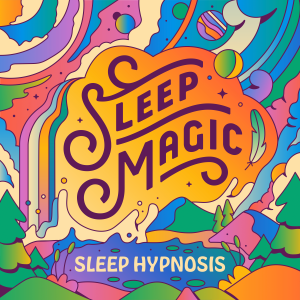

Zephyr Yoga Podcast
https://feeds.acast.com/public/shows/647f15d5aa1f10001150f37aEpisode List

Subtle Body – Chakras – 3. Manipura Chakra
Apologies for the audio quality; I’m working on fixing it. Thanks for your patience.Today, we explore the 3rd chakra, Manipura, meaning “city of jewels.” Located at the solar plexus, it governs self-definition, confidence, and personal power. Associated with fire, it fuels digestion, metabolism, and transformation—Agni. The bija mantra is RAM, its colour is yellow, and its sense organ is sight, representing vision and illumination (Tejas).Fire in yoga, or Tapas, creates positive change through disciplined action and intention. Imbalances manifest as rajasic dominance (control, aggression) or tamasic weakness (low self-esteem). A balanced state, or sattva, fosters vitality, confidence, and wise action.Manipura’s ten-petal lotus represents overcoming negative tendencies like fear, shame, and ignorance, replacing them with strength, compassion, and clarity. Its symbol, a downward triangle, signifies transformation. The ram embodies courage and determination.Let’s connect with our power and purpose. Enjoy the practice.To read more and to practice with Zephyr Wildman, click here. To support Zephyr Yoga Podcast, donate here. Hosted on Acast. See acast.com/privacy for more information.

Subtle Body – Chakras – 2. Svadhisthana Chakra
The Svadhisthana, or Sacral Chakra, is associated with emotions, creativity, sensuality, and the water element. Located in the lower belly, it is symbolised by a six-petaled lotus representing desire, sensuality, adaptability, emotional balance, creativity, and fantasy. The crescent moon within the lotus reflects the cyclical nature of emotions, reminding us to embrace change with grace.The chakra’s bija mantra is “VAM,” and its mudra is Jala Hasta, symbolising emotional flow. When balanced, it fosters healthy desire, creativity, and the right to feel and express. Imbalances may manifest as emotional extremes, attachment, or numbness.Svadhisthana governs our ability to experience pleasure and emotional depth. The associated sense is taste, emphasising the importance of savouring life. Represented by water-associated symbols like the yoni and crocodile, it embodies fluidity and primal instincts. Practicing yoga helps cultivate awareness, balance, and a deeper connection to our emotions and creativity.To read more and to practice with Zephyr Wildman, click here. To support Zephyr Yoga Podcast, donate here. Hosted on Acast. See acast.com/privacy for more information.

Subtle Body – Chakras – 1. Muladhara Chakra
The Muladhara, or Root Chakra, is the foundation of the chakra system, located at the base of the spine. It is symbolised by a four-petaled lotus, a red square, and a downward-facing triangle representing stability and grounding. Associated with the earth element (Prithvi Tattva), its bija mantra is “LAM,” and its hand mudra is Prithvi Mudra. The elephant symbolizes its qualities of strength, protection, and connection to the earth.Muladhara governs survival needs, security, and belonging. A balanced root chakra fosters stability and confidence, while imbalance can manifest as fear, insecurity, or material obsession. In yoga, grounding poses and meditations help harmonise this energy, promoting strength and flexibility. Kundalini energy, depicted as a coiled serpent, resides here, representing spiritual potential. Working with Muladhara creates a solid base for overall well-being and higher spiritual growth.To read more and to practice with Zephyr Wildman, click here. To support Zephyr Yoga Podcast, donate here. Hosted on Acast. See acast.com/privacy for more information.

Subtle Body – Nadis
Subtle Body – NadisYoga is the mastery of self-knowledge, while Tantra is the mastery of Prana’s power. Weaving asana, pranayama, mudra, kriya, mantra, and philosophy, we aim to empower ourselves with loving awareness to fulfill our purpose. Yoga is the management of prana, the life force that animates and sustains us physically, mentally, and emotionally.The subtle body, or Sukshma Sharira, bridges the physical and spiritual realms through nadis (energy channels) and chakras (energy centers). The three main nadis: Sushumna (central), Ida (left, lunar), and Pingala (right, solar)...govern prana flow and balance. Kundalini, the dormant spiritual energy at the spine's base, rises through Sushumna, purifying chakras and leading to spiritual awakening.Practices help activate and harmonize the subtle body, enabling physical health, mental clarity, and spiritual growth. While siddhis (psychic abilities) may arise, the goal remains self-realisation and unity with the divine, fostering transformation with guidance and humility.To read more and to practice with Zephyr Wildman, click here. To support Zephyr Yoga Podcast, donate here. Hosted on Acast. See acast.com/privacy for more information.

Purusarthas – 4 Desires – 4. Moksha
Purusarthas – 4 Desires – MokshaMoksha is the ultimate desire...liberation from ignorance (avidya), the cycle of birth and death (samsara), and the effects of karma. It is the realization of one’s true self (Atman), transcending the ego and achieving union with the divine (Brahman), leading to eternal bliss and peace.Yogis pursue Moksha through various paths: Hatha Yoga (physical practices), Raja Yoga (meditation), Jnana Yoga (knowledge), Karma Yoga (selfless service), and Bhakti Yoga (devotion). By practicing self-inquiry, mindfulness, and non-attachment (vairagya), they purify the mind and cultivate virtues such as compassion and forgiveness.Sacred texts like the Upanishads and Bhagavad Gita offer insights into Moksha, while guidance from a guru or one's inner wisdom (buddhi) aids the journey. Devotion and surrender help yogis transcend the ego and merge with the divine. With dedication and grace, Moksha brings profound liberation and spiritual transcendence, fulfilling the soul’s deepest longing.To read more and to practice with Zephyr Wildman, click here. To support Zephyr Yoga Podcast, donate here. Hosted on Acast. See acast.com/privacy for more information.
You may also like
Create Your Podcast In Minutes
- Full-featured podcast site
- Unlimited storage and bandwidth
- Comprehensive podcast stats
- Distribute to Apple Podcasts, Spotify, and more
- Make money with your podcast












